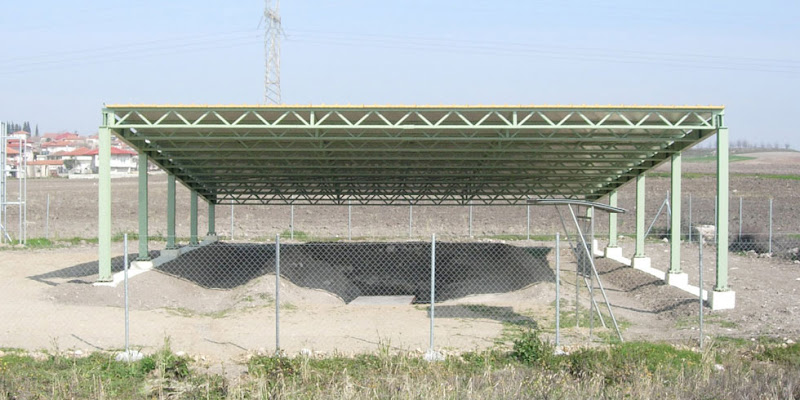An imposing multi-chambered tomb in ancient Pella, the largest rock-hewn chamber tomb in Greece, has been opened to the public.
The monument, located before the archaeological site of Pella, on the way to the Archaeological Museum, has been made accessible via funding from the Interreg III programme and will stay open to the public until November.
'It's a very particular type of Macedonian Tomb, carved into soft rock, very impressive and quite moving. The lighting inside is such that it gives the impression of the descent into Hades,' says the Head of the Ephorate of Antiquities in Pella, Elizabeth Tsigarida.
The chamber walls are decorated with bands of coloured plaster - black, blue, red and white - while the upper part of the walls and ceiling are painted white.
'An eight chambered tomb is quite unique for Macedonia, where we useally find tombs with one or two chambers, and very rarely with three-chambers. Even then the third chamber is often a later addition,' says the head of the excavation, and the tomb's honorary curator, Maria Lilimpaki-Akamati.
The most surprising find, says the excavator, was that of a marble relief stele inscribed with the name 'Antigone, daughter of Aeneas', in the tomb's dromos.
'The stele probably stood on top of the burial mound. In the upper band of the peristyle is the inscription «ΑΝΤΙΓΟΝΑΙ ΑΙΝΕΙΟΥ ΗΡΩΙΣΣΗ» dating to the late 3rd-early 2nd century BC.
'The relief depicts the deceased Antigone and her handmaid holding a jewelery box. The relief itself dates to the first quarter of the 3rd century BC, while the inscription appears to have been added sometime during the first half of the 2nd century BC,' she adds.
In the first chamber of the western wall there was an inscribed stone altar associated with the burial of Nikostratos from Boeotia, daughter of Pythonos, and which illustrates once more that people from many regions of Greece had settled in Pella.
Regarding the dead who were buried in the tomb, Ms. Lilimpaki believes that 'the multiple burials in the tomb belonged to a wealthy local family. However the skeletal remains are so poorly preserved that the number of the tomb's occupants and their respective ages remains a mystery.'
Some of the figurines found in the tomb are clearly associated with children's themes, which means that there were at least some child burials in the tomb.
'The diversification of the funerary piers and the associated offerings clearly reflects the economic situation of the family that used the tomb and therefore can be linked to the economic decline of the Macedonian state from the second half of the 3rd century BC onwards,' says the head of the excavation.
Source: Ethnos [September 30, 2015]





